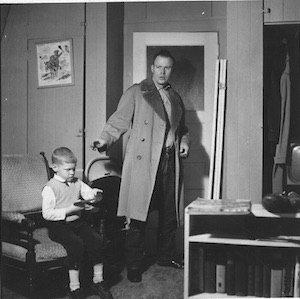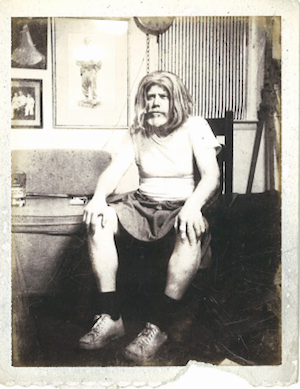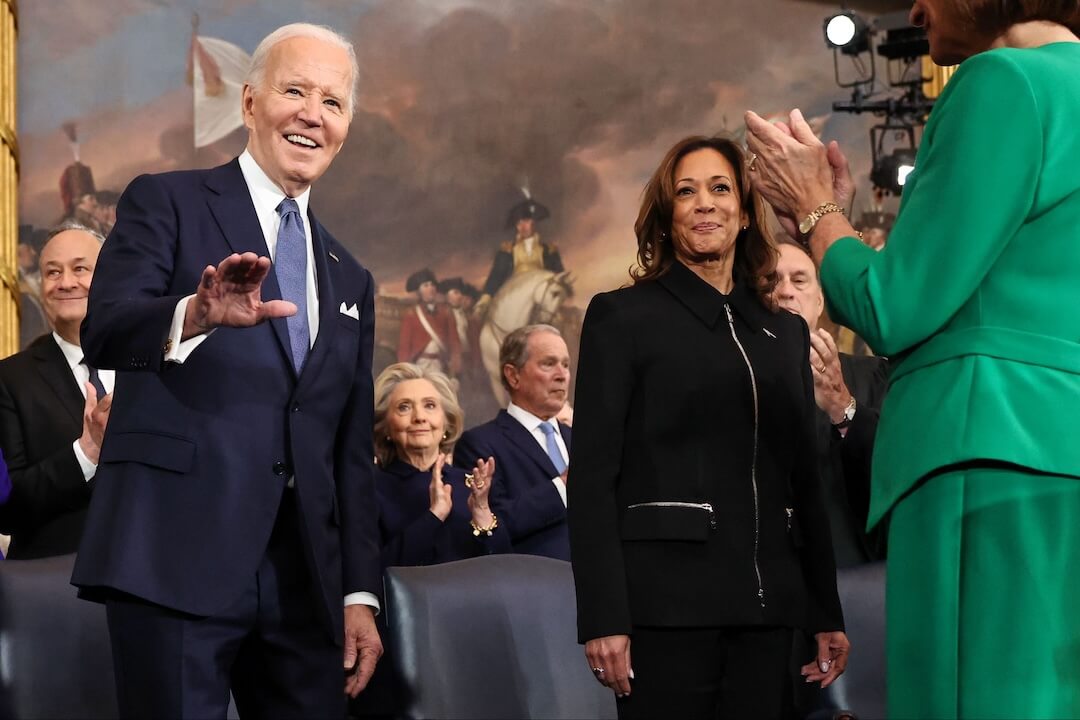Just imagine: In 1922, cartoonist Sidney Smith, creator of the then-popular The Gumps comic strip, signed a contract with the Chicago Tribune that paid him $100,000 and included a Rolls-Royce. That salary would be about $1.4 million these days, by one inflation-driven estimate. And the Rolls.
The hefty compensation is mentioned in Cullen Murphy's "Cartoon County: My Father and Friends in the Golden Age of Make-Believe" as a small way to underscore how the growth of newspapers and advances in color printing once made comics a very big deal. It's a backdrop to the world in which his own illustrious father, John Cullen Murphy, whose handiwork included "Prince Valiant," labored amid an arguably incomparable array of comic strip artists, illustrators and gag writers who wound up living in close proximity in and around Fairfield County, Connecticut.
Indeed, comics were so important to a publisher like William Randolph Hearst that he micromanaged the selection of those that ran in his empire's pages. The last ones he approved for syndication were "Big Ben Bolt," the first big success of Murphy's dad, and "Beetle Bailey," the creation of Fairfield County resident Mort Walker (who'd come east from Missouri to be editor of a magazine called 1000 Jokes).
Murphy is a polymath author (books on everything from garbage to the fall of Rome's relevance to America) and former managing editor of The Atlantic who is now a top editor at Vanity Fair. He grew up in the cartoon world, even assisted in writing "Prince Valiant," and knew many of the stars of the industry as neighbors or chums of his parents (and, as would be natural, not realizing how big these chums were in the life of America).
As "Doonesbury" creator Garry Trudeau noted in a very positive, if far from comprehensive New York Times review of a book that captures the heyday of comics: "Fairfield County had become home to the nation’s leading illustrators and cartoonists, primarily because of proximity to New York City’s syndicates and magazines, but also because of the lack of a state income tax. The county had not yet become the exclusive suburb of choice for hedge fund managers, and homeownership was still within the means of artists with irregular paychecks."
Trudeau might almost be too close to the topic at hand, not fully expressing what should be the real allure to non-comics experts of Murphy's understatedly potent effort. This was a group bound by extraordinary creativity, a refreshingly mild dose of anarchy and (by and large, and importantly so) service in World War II. The author's dad, for one, spent much of the war as largely an artist and illustrator on Gen. Douglas MacArthur's staff in the Pacific and produced a giant array of portraits and illustrations, many deceptively poignant, about the war that would have been unknown to his millions of newspaper devotees.

The book is a tribute to his talented dad (also the father of eight children) and an unavoidable cultural history that inadvertently reminds one of the limits of caricature, such as seeing the 1950s as a decade of conformity.
Not these guys (nearly all white males, even for a long time after the war). They were independent minded and patriotic souls, laboring in the most mass of mass media of the time with a brilliantly niche set of talents. They were the opposite, say, of the budget-minded journalism apparatchiks who can be found in all too many newsrooms and are partly to blame for many dishwater-dull products. They were the iconoclasts who tested limits and, over time, have become a luxury for too many editors fumbling with cost cuts and often failed strategies to attain "relevance." Nothing was more relevant than they were.
You can only imagine what it must have been like taking the train with them into Manhattan as they hawked their wares at syndicates, magazines and ad agencies most weeks, or as they reconvened for lunch or at a tavern in midtown before returning to Grand Central Station for the ride home (perhaps to Westport, where The New Yorker's longtime art director and cartoon editor, Jim Geraghty, lived, "as did twenty or so of the magazine's cartoonists and illustrators").
I've known Murphy, the son, for a long time, but this was the first chance to broach such an obviously deeply felt part of his life and, in ways, the nation's. A few questions seemed incumbent:
This book, first and foremost, is about a remarkable set of circumstances that are surely unknown to most children of the digital age. They involve a nexus of a then-thriving newspaper (and print magazine) industry, which provided an outlet for creativity — and whose size seem unfathomable today — and a remarkable group of talented individuals. How would you explain the most fundamental realities back then (briefly!) to, say, the 20-somethings at Vanity Fair, Vox, Politico or The Washington Post?
The hardest thing to get your mind around is that there was once a mass medium that virtually everyone had access to, and that virtually everyone — people from every social class, people of every educational level — considered to be a taken-for-granted part of their lives. I'm talking about newspapers, and in particular the Sunday paper. No TV channel or news program or web site or radio station today has anything comparable to the broad reach of, say, the color-comics supplements that wrapped the Sunday newspapers 50 or 75 years ago. There may be good things about the present state of affairs — we have more voices in the media marketplace, by orders of magnitude; barriers to entry are lower — but there is a loss too: a loss of sheer social commonality. The ability today to identify and speak to smaller targeted audiences has leveraged the power of those audiences, and increased the power of those who can reach them. Reaching society as a whole is a special talent, and one that has atrophied. I won't make special claims for the significance of the cartoonists in my father's time, but they did at least have that talent, and the phenomenon is easy to lose sight of once it's gone. Strips like "Peanuts" and "Prince Valiant" and "Beetle Bailey" — and, earlier, strips like "The Gumps" — achieved a level of pop cultural saturation that almost nothing does nowadays.
Who were these people? Journalists? They seemed to eschew the word "artist," though many clearly were. Social commentators with a sense of humor? How would one characterize the creators and illustrators of "Prince Valiant," "Hi and Lois," "Hubert," "The Phantom," "Blondie," "Hagar the Horrible," "Little Orphan Annie," "Popeye," "Nancy Drew," "Brenda Starr," "Krazy Kat" and others? And a lot of them did serve in World War II, did they not? How did that experience play in the whole picture?

The many cartoonists I knew — and I think cartoonists in general — were a type of person we still have in abundance, and for all I know maybe have more of. They were quirky individualists with a creative streak who had somehow gotten it into their heads that they didn't have to fall into line and live life in what society might consider a "normal" way. They had a notion that there might be a market for the ideas lodged in their heads, when the ideas were coupled with the images flowing from their fingers. The wartime experience was a crucible for most of them in at least a couple of ways. For one thing, it exposed these men (and cartoonists were almost all men at that time) to Americans who were unlike themselves — the very nature of a universal wartime draft brought that about very effectively. And what this did — to my point above — was give these budding cartoonists a feel for creative work that had broad appeal. The other thing that military service accomplished was to show cartoonists that they could thrive even in the midst of the most regimented environment imaginable. People like Mort Walker and my father and scores of other cartoonists readily found outlets for their work while in the service. The military newspapers launched many careers. If you could nurture a bohemian streak at Fort Bragg, it gave you confidence that you could do the same later in Manhattan.
Are there one or two comic strips that you grew to have an even greater appreciation of as a result of your research? If so, what struck you?
The ease with which readers understand and appreciate a cartoon or a comic strip, in a matter of a few seconds, can mislead you into thinking the work that goes into them is correspondingly simple. I mean, comic strips look simple; and cartoonists, for their part, don't want the effort to show. But the economy of the writing, and the just-so combination of words and pictures, is actually very hard. So delving more deeply into the lives and work of cartoonists made me admire their achievement across the board. Stan Drake's "The Heart of Juliet Jones" is one standout — it's stylishly melodramatic and beautifully drawn. Even people with a modern taste can look back at it and see how special it was. The same is true of Alex Raymond's "Rip Kirby" — it has something of the noir character of Chandler but also the sardonic character of the Bond movies. It holds up as a class act even now. And among the so-called "bigfoot" strips —the funny strips — a feature like "Hi and Lois" has a lot more going on than meets the eye. The character Trixie, for instance, is a brilliant creation — she's the toddler who can't speak and whose often-subversive mind we know only through thought balloons. Mort Walker told me once that he got the idea for Trixie from encountering interior dialogue in a Sinclair Lewis novel.
In journalism, people of our generation can fall prey to mythologizing the past. But I found myself reading this and saying, "Oh, my goodness, what a stunning array of talent, what artistry, what often provocative creative vision!" There's no real counterpart today, is there? If transported forward in time, where would your dad and his friendly rivals be working today?
Well, some of them would have found their way to Pixar, I'm sure, and a lot of them might have gravitated to children's books (which is one area where cartoons and illustration have not lost their centrality) and to comic books. But I think a majority of the people who in 1950 would have been striving to do a comic strip would today be happily invested in creating graphic novels. It has become a huge industry — by volume and variety, if not by dollar standards. You can think of the decades after the turn of the last century, when Hearst and Pulitzer were fighting their newspaper wars, as the first Golden Age of comics. The second Golden Age comes after World War II, my father's generation. And we've now entered a third Golden Age — the age of the graphic novel. Browse through any bookstore and you'll find rows and rows of graphic novels of immense range — from "Maus" and "Persepolis" to "Ghost World" and "The Sandman." Writers and cartoonists working on graphic novels don't have the mass reach of a comic strip creator of yore, but that gives them a freedom that any cartoonist of the 1950s would have envied. Precisely because comic strips back then had a mass audience, censors — I mean, editors — at the newspaper syndicates felt no compunction about laying down the law. Before my father drew "Prince Valiant" he drew "Big Ben Bolt," about a prizefighter. He soon discovered that it was forbidden to show male nipples. (Why this was so, he never learned.) With their niche audiences, graphic novelists can pretty much do what they want — they can explore any subject, draw any picture.
Okay, finally: What's the most important lesson of "Cartoon County" when it comes to the evolution of modern media?
I don't want to come off as overly romantic about comic strips. The cartoonists were overwhelmingly white and male, and the strips did not reflect America in all its diversity, or even try to. But it's worth noting, in an age of media fragmentation, that something as unprepossessing as comic strips reached almost everybody in the country. The strips adhered to certain levels of professionalism and taste. Some of them were very sophisticated, both in terms of the writing and the drawing. I think as a country we've forgotten what it's like to have cultural touchstones to which everyone responds. Comic strips remind us of what we had, and maybe can have again.






